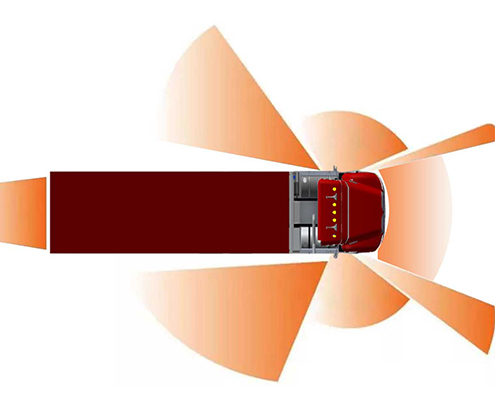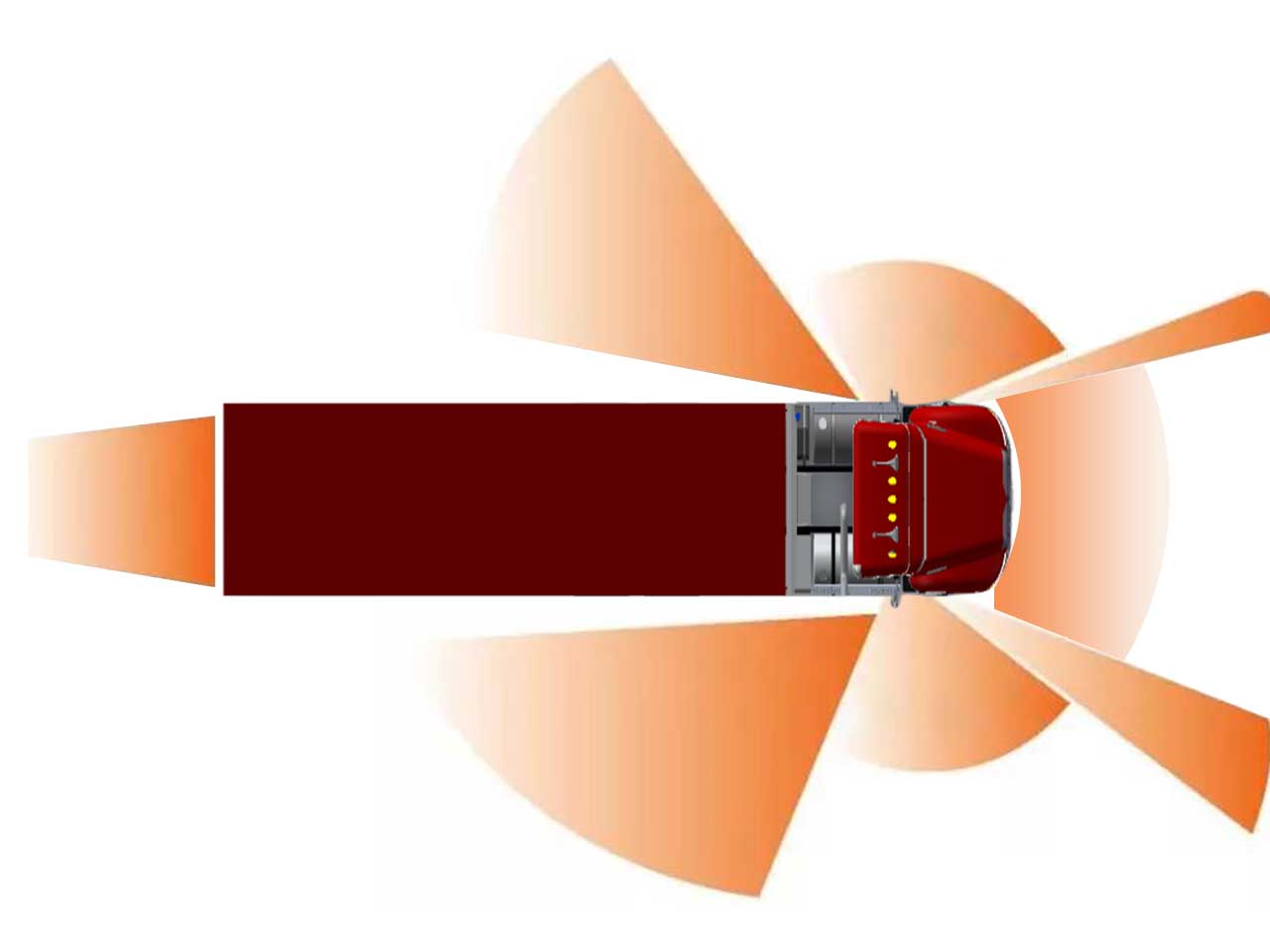In modern society, large trucks, as an important tool for the transport of goods, provide indispensable support for economic development. However, their large size and complex structure are accompanied by a series of safety hazards, especially the blind spot problem when travelling on the road. In order to ensure the safety of road traffic and reduce the occurrence of traffic accidents, every pedestrian and driver should stay away from large trucks and be alert to the blind spot of large trucks.
Ⅰ. the blind spot analysis of large trucks
The blind spot of large trucks refers to the area within the driver’s line of sight but cannot be directly observed. Due to the huge size of large trucks, the driver’s line of sight is greatly restricted, resulting in some areas can not clearly see the surrounding situation. The main large lorry blind zones include:
Front Blind Zones: With the driver of a large lorry sitting in the cab, the height of the front floor creates a blind zone in a certain area in front of him, in which pedestrians or small vehicles can easily be concealed.
Rear Blind Zone: The rear of a large truck also has a blind spot in the driver’s line of sight, especially near the bottom of the body. This makes it difficult for the driver to detect pedestrians or vehicles near the rear of the vehicle.
Side Blind Zones: There are two blind zones on the side of a large lorry, located in the driver’s and co-driver’s side window areas. This means that pedestrians, bicycles or small vehicles on either side of the vehicle are likely to be overlooked.
II. Pedestrian and Driver Safety Recommendations
To avoid potential hazards and accidents, pedestrians and drivers should take the following safety measures:
Keeping a distance: Pedestrians should walk as far away as possible from large trucks on the roadway, especially the front, rear and sides of large trucks. Maintaining sufficient distance reduces the risk of being covered by the blind spots of large trucks.
Avoid stopping: Pedestrians and bicyclists should avoid stopping near large trucks, especially at areas prone to congestion such as traffic light intersections. Staying in these areas may put you in the blind spot of a large truck.
Watch for Turns: Large trucks are especially prone to accidents when turning. Drivers often need to turn the steering wheel significantly, which may result in pedestrians or vehicles in the blind spot that are unnoticeable to the driver. Pedestrians and drivers should use extreme caution around large trucks.
Mutual Warnings: Drivers and pedestrians can warn each other through eye contact or hand signals. Drivers can use turn signals to signal before turning or changing lanes, and pedestrians can indicate their intentions through hand signals.
III. Responsibilities of Government and Enterprises
In addition to self-prevention by pedestrians and drivers, the government and enterprises should also take up the corresponding responsibility to take measures to reduce the risks caused by the blind spots of large trucks:
Enhanced publicity: The government can remind pedestrians and drivers to pay attention to the blind spot problem of large trucks through media publicity and signage, so as to increase public safety awareness.
Technical improvements: Companies can install rear-view cameras, sensors and other devices on large trucks to help drivers better observe the situation around their vehicles and reduce the safety risks posed by blind spots.
Traffic planning: The government can set up pedestrian-only lanes in urban traffic planning to avoid direct contact between pedestrians and large trucks, thus reducing the risk of accidents.


